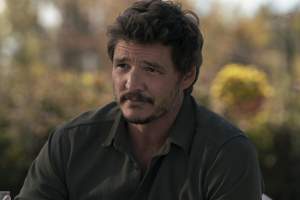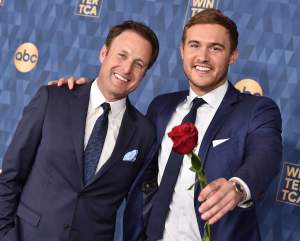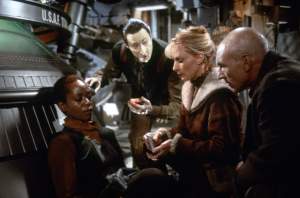Minority Report

andrewz/moviestillsdb
Minority Report was the first of two collaborations between Spielberg and Tom Cruise. It was unsurprisingly a box office bonanza when it premiered in June of 2002. Based on the Philip K. Dick novel of the same name, it’s an edgy action sci-fi roller coaster that mixes in just enough classic mystery whodunit elements to become something unique in Spielberg’s filmography.
While it was released to almost universal acclaim, there were complaints about a slightly bloated runtime and that the film somewhat runs out of steam by the time it pulls into the station. The final act might not work for everyone, but that shouldn’t take away from the high highs Minority Report reaches.
Close Encounters of the Third Kind

richard3rd/moviestillsdb
Much of the glowing praise for Close Encounters of the Third Kind focuses exclusively on the film’s final sequence, and for good reason. The entire final act is some powerful filmmaking and some moments will stay with you for the rest of your life. Spielberg drills in on a larger theme of communication and reaching out to the other that he will continue to revisit throughout his career. Having said that, this praise shouldn’t sell the rest of the feature short. Lead actor Richard Dreyfuss is at his best here as a man trying to come to terms with experiences that fundamentally change his understanding of himself and the universe. Don’t listen to anyone who says Close Encounters is “slow” — that says more about them than it does the film.
Lincoln

Draufwischer/moviestillsdb
Most of the critical praise for Lincoln went to the incredible central performance of Daniel Day-Lewis as a weary yet stubbornly optimistic Abraham Lincoln in the final days of the American Civil War. He’s incredible, but Spielberg’s direction shouldn’t be overlooked. His ability to turn the story of passing the Thirteenth Amendment which mostly involved circular debate and whipping votes into riveting political theater is a monumental achievement.
Both the director and the star are aided by one of the greatest casts ever assembled, working off of a perfectly structured script from Tony Kushner. Extra points to James Spader who, in a minor role, performs phenomenally well.
Saving Private Ryan

robyher/moviestillsdb
Steven Spielberg and cinematographer Janusz Kamiński fundamentally changed the way that war films are shot with Saving Private Ryan. On first viewing the visceral nature of the violence combined with the frantic, oppressive visual and aural noise is borderline exhausting and perfectly sets up an audience to get inside the heads of the soldiers whose journey has only started.
When the movie was released to theaters in July 1998 there was a deluge of stories of veterans being unable to get through the opening Normandy Beach sequence. While these may have been played up for PR purposes, the effectiveness of Spielberg’s filmmaking makes these anecdotes believable.
West Side Story

michaella92/moviestillsdb
Spielberg and cinematographer Janusz Kamiński have done it again. West Side Story is a feast for the senses, blending stunning visual filmmaking with incredible choreography and beautiful vocal performances to create a timelessly classic musical.
This is the second adaptation of the stage musical of the same name and (potentially unpopular opinion alert) is superior to the 1961 film adaptation in just about every way. It’s a shame that the film was a massive financial failure. Hopefully, studios realized that was more about reluctance to visit a theater during COVID than it was an aversion to big, lavish musicals. It’s something that’s been missing in Hollywood release schedules for a good, long time.
Jurassic Park

crane/moviestillsdb
Put it this way: the original Jurassic Park was such an incredible film that it spawned an entire franchise for Universal that continues to this day even though not a single one of the sequel movies has been any good. How crazy is that?
The genius of Spielberg’s dinosaur creature feature is how it effortlessly shifts in tone, bouncing around from light sci-fi to wild action to terrifying horror on a whim. There are more jump scares and genuinely scary moments here than in most films that are explicitly in the horror genre. Undoubtedly one of the best films of the 1990s.
E.T. the Extra-Terrestrial

bilbo/moviestillsdb
If it wasn’t clear before, after the release of The Fabelmans there should be no doubt that much of Spielberg’s directorial output is him publicly working through the childhood trauma of his parents’ divorce. While we often see this explored from an adult’s perspective, E.T. the Extra-Terrestrial explicitly examines the director’s feelings as a child about loss and loneliness.
The actual movie is a beautiful family drama dressed up with science fiction trappings. Spielberg’s strengths as a great director of actors are on full display as he gets incredible performances out of the children in the cast. You’ll laugh, you’ll cry, you’ll be uplifted and sometimes quite scared. A perfect family film for all ages.
Schindler’s List

andrewz/moviestillsdb
What a testament to Steven Spielberg’s unmatched range as a filmmaker that Schindler’s List was released in the same calendar year as Jurassic Park. Who else could have released the (at the time) biggest box office draw in history and the winner of best picture within a few months of each other?
The Kraków scene is the keystone sequence of the film, and the director devastatingly uses a single piece of color in his otherwise black-and-white film to punctuate what was already a harrowing fifteen minutes.
Schindler’s List isn’t an easy watch, but it is an important one.
Raiders of the Lost Ark

zayne/moviestillsdb
Spielberg and his producing partner George Lucas set out to create a love letter to the adventure serials of their youth and ended up making one of the greatest action movies of all time. Oops.
They also, incidentally, invented a new mythic hero in Indiana Jones — an American James Bond, as it were. Instantly identifiable via silhouette, the leather jacket, hat, and signature whip became an iconic Halloween costume for at least the next fifty years.
Any would-be action director should study Raiders of the Lost Ark like a sacred text. There isn’t a single frame that isn’t exactly where it needs to be.
Jaws

andrewz/moviestillsdb
It’s funny that Jaws is considered the progenitor of the big popcorn movie since it is a deliberately paced thriller and has more in common with Psycho than it does Top Gun.
Jaws changed everything when it was released in the summer of 1975. It (along with Star Wars a year later) effectively established the concept of the summer blockbuster. It changed the release structure of major motion pictures and the way films are advertised. Oh, and it gave an entire generation of young moviegoers an irrational fear of the ocean.
It’s a perfect film. There isn’t much else to say. If you haven’t seen it, stop what you’re doing and change that immediately.







